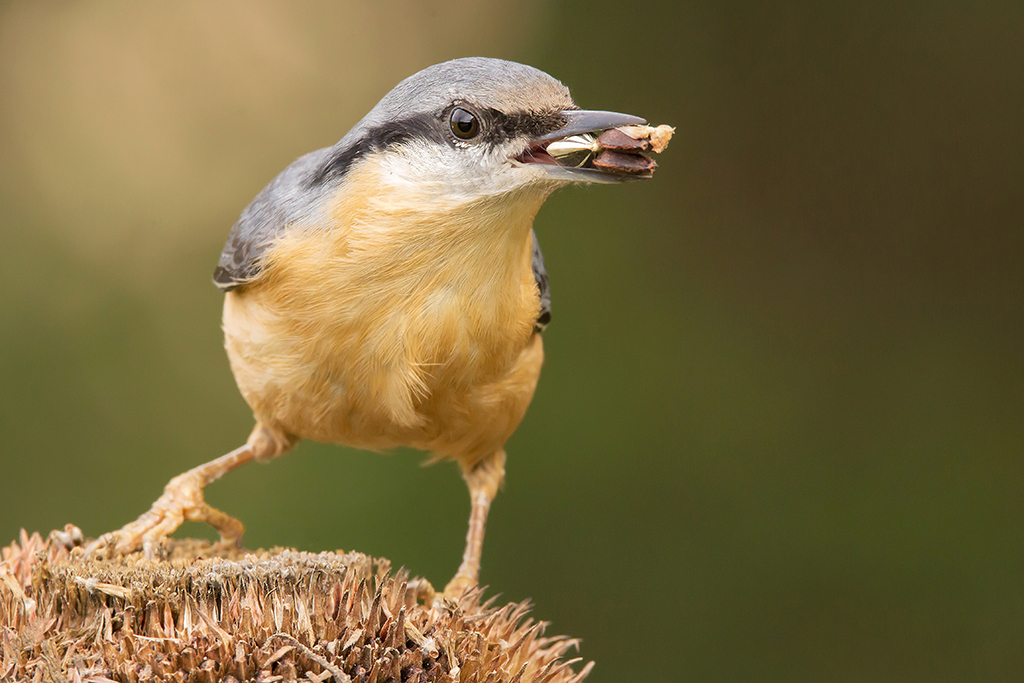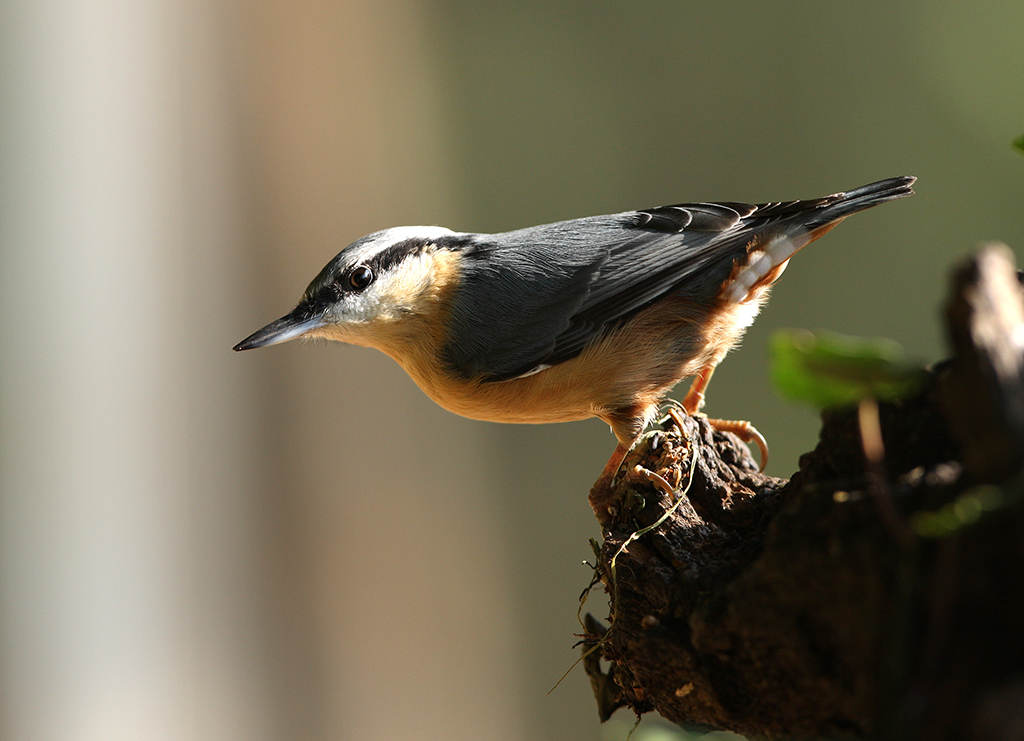
The masked raiser invading gardens and trees
With its Zorro-style eye markings, the distinctive nuthatch has northern Scotland in its sights.
I am peering out of my office window at the sodden garden, hoping for inspiration to strike. Suddenly I see it; a flash of grey-blue back with a soft apricot-coloured breast, it lands on the cotoneaster and I register the long slender bill, round body, short legs, and the masked bandit eye strip – a black stripe that runs from bill tip to the edge of the head. It’s a nuthatch.
I grab the camera and race outside – just too late.
Recently, people have been telling me excitedly that they have nuthatches visiting their garden feeders, which I had not previously come across in Highland Perthshire – at least not on a regular basis.
So why should this be of note? There are records of nuthatches in various parts of Scotland that date back to the 1800s, but attempts to establish them, notably by the Duke of Argyll at Inveraray, proved unsuccessful.
At one point there must have been a more prolific Scottish population, but although old statistical accounts claim vague, uncertified sightings, there was no official record of breeding nuthatches in Scotland until 1989.
A sedentary species, the nuthatch is not known for its globetrotting ways. For the past 30 years, populations in southern Scotland and the Borders have expanded, but there were still only a smattering of sightings from further north.
Even in England this brilliant little bird has a patchy distribution, entirely dependent on habitat. Ancient parkland trees are a vital part of a nuthatch’s environment and it is usually when this is adjacent to a well-stocked garden that they might become daily visitors.
Not all English invasions have proved popular north of the Border, but judging from the tales of keen garden birdwatchers I speak to, the nuthatch is being welcomed with laden peanut feeders and much curtain twitching. I have only had that all-too-brief sighting in my garden, but I am seeing the occasional one out and about. And I am hearing them regularly in the Forestry Commission’s Weem Wood, adjacent to Castle Menzies at Aberfeldy, just two miles from home – so there is hope.

The strong, sharp bill is used to hack open nuts
Sprawling down the steep, craggy hillside, Weem is a rich sylvan habitat favoured by spring migrants, including wood warbler, blackcap, garden warbler, an occasional redstart and the cuckoo. The gnarled and wizened deciduous trees comprise mature oak, hornbeam, lime, and beech, and the nooks and crannies create an environment the nuthatch relishes.
Unsurprisingly, many of the earliest records of Scottish nuthatches come from big estates; the Hirsel at Coldstream, Floors Castle, and Bowhill at Selkirk, where the mature plantings provide an excellent habitat. And rather than any social climbing this might suggest, the nuthatch climbs upside down; it is the only bird that can descend a tree in this position and spends much of its life upside down, which only adds to its charm.
It may have short legs, but its strong toes with long claws work like crampons to grip onto bark. Even the delightful little treecreeper, with its equally long, flexible toes, is unable to match these acrobatics.
It may be small, but the nuthatch is an aggressive little devil. Its highwayman stripe seems appropriate when it is driving off other birds from feeders. Highly territorial, this behaviour is unusual for a garden bird, although greenfinches and goldfinches can also be aggressive.
Food is the main reason for the nuthatch’s aggression and much is stored up for a hard winter. Seeds, such as sunflower, are gathered from bird tables and frenetically hidden in the soil in tubs, planters and flowerbeds. Specialist cavity nesters, the abandoned holes of greater spotted woodpeckers are often chosen as nurseries.
The entrances are expertly made smaller as the new occupants plaster them with mud to help keep predators out and to minimise competition for the site. The over-zealous birds often make the holes too small, and cannot get in and out themselves.
An astonishing amount of mud is used, which sets hard. Nest boxes may also be adapted as the mud-plastering goes too far; lids are firmly sealed and perfectly sized entrances are made too narrow, making it impossible to squeeze in.
When they do find a place to settle, the nuthatch is monogamous. A pair will form a strong bond and the male does not like to be separated from the female for too long.

Long claws allow the birds to cling on to the bark of trees
Amongst the noisiest of birds in springtime, he will call to her when she ventures out of sight.
A bossy bird, the nuthatch also has a distinctive song, which is not the most melodic, and certainly not in the league of songsters such as the blackbird and thrush. Starlings are not the only birds to mimic others, the song thrush does too and in some parts of Scotland signs that nuthatches are becoming more prolific are apparent to those with an ear for birdsong who can hear song thrushes adding in a few copied nuthatch notes to their dawn serenades.
Old churchyards with mature trees also provide superb nuthatch habitats. Crumbling walls and ancient buildings offer choice nesting holes, and ancient yew trees with mysterious crevices packed with invertebrate life are perfect places to rear young. Nests are lined with old leaves and small pieces of bark chip.
There may be a large brood, but usually in Scotland there is not a second one.
Like a woodpecker, the nuthatch has a strong sharp bill, but none of the same woodworking skills. Nuts and seeds are often taken to a tree crevice where they are expertly wedged tight, allowing the birds to hack away to open them.
Nut-jobber, woodcracker and mud-dauber are just a few of the bird’s nicknames. There is a suggestion that global warming and climate change are partly why the nuthatch
is on a northerly march.
Although we are losing some species, perhaps others like the perky nuthatch will fill the void, cheering the gloom that surrounds so much garden birdwatching as we come to terms with the fact that so many treasured birds seem in sharp decline.
(This feature was originally published in 2015)
TAGS

